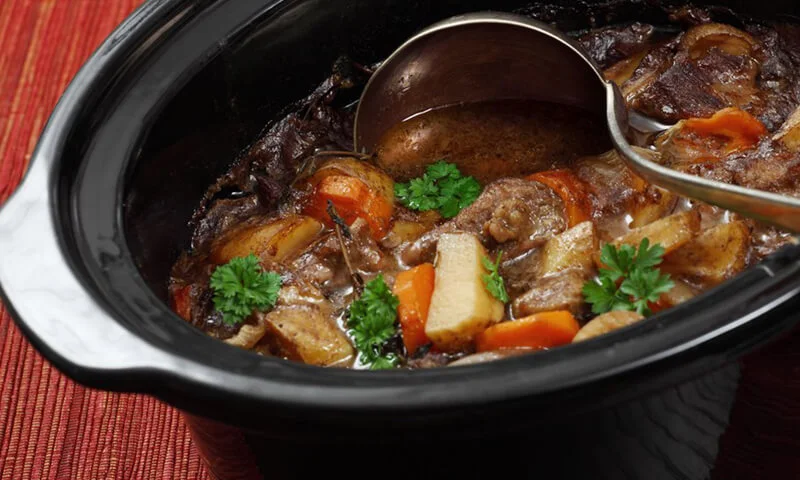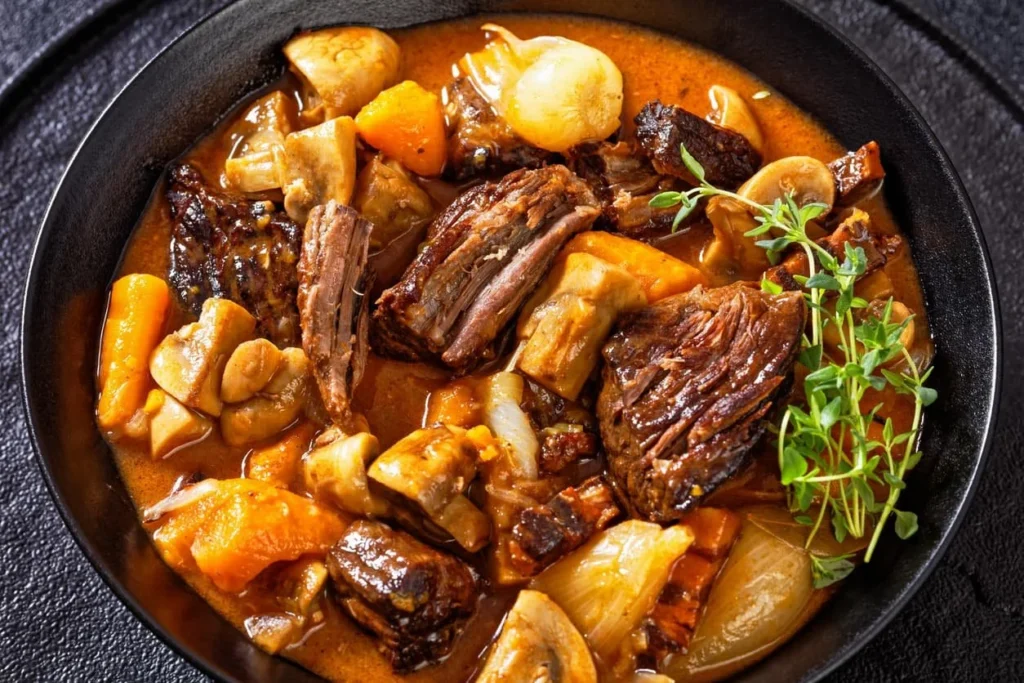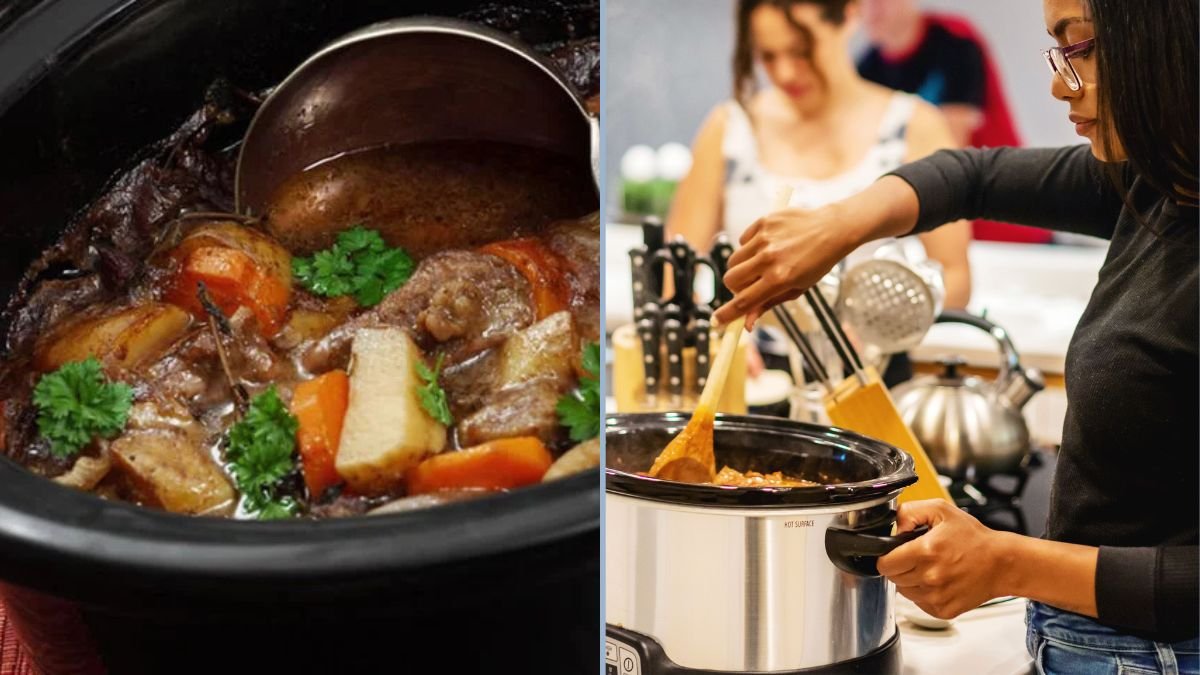In today’s fast-paced world, preparing wholesome, home-cooked meals often feels like a challenge. However, slow cooking offers a practical, convenient, and health-conscious solution. By using low heat over an extended period, slow cooking enhances flavors, preserves nutrients, and allows for stress-free meal preparation. Beyond its culinary advantages, slow cooking promotes healthier eating habits, saves time, and encourages creativity with plant-based ingredients. This article explores the benefits of slow cooking and provides practical guidance for getting started with plant-based recipes at home.
Understanding Slow Cooking

Slow cooking is a method of preparing food using low, steady heat for an extended period, typically several hours. This technique is often done with a slow cooker or crockpot, but can also be achieved in an oven set to low temperatures. Unlike high-heat cooking methods, slow cooking preserves the natural flavors and textures of ingredients while requiring minimal attention during the cooking process.
Benefits of Slow Cooking

1. Enhances Flavor and Texture
Slow cooking allows flavors to develop gradually, creating rich, savory, and harmonious dishes. For plant-based meals, this method is especially effective for:
- Legumes and beans: Slow cooking softens beans and allows them to absorb flavors from herbs, spices, and broth.
- Root vegetables: Carrots, sweet potatoes, and beets become tender and naturally sweet.
- Grains: Quinoa, barley, and brown rice absorb liquids and seasonings evenly, resulting in creamy textures.
The gentle heat encourages natural caramelization and flavor blending without burning or overcooking ingredients.
2. Retains Nutrients
Cooking at lower temperatures preserves heat-sensitive nutrients, including vitamin C, B vitamins, and antioxidants, that can be lost in high-heat methods such as frying or boiling. Slow cooking with fresh, whole ingredients ensures that meals remain nutrient-dense while enhancing digestibility.
3. Supports Healthy Eating

Slow cooking encourages the use of whole, plant-based ingredients. Meals prepared in this way are typically lower in processed foods, added sugars, and unhealthy fats. By cooking meals at home, individuals can control salt, oil, and seasoning levels, promoting heart-healthy and nutrient-rich eating habits.
4. Saves Time and Reduces Stress
One of the greatest benefits of slow cooking is convenience. Preparing ingredients in the morning or the night before allows the slow cooker to do the work while you focus on other tasks. This is particularly useful for busy families, students, or professionals, as it minimizes time spent in the kitchen while ensuring that a nutritious meal is ready when needed.
5. Encourages Meal Prep and Portion Control
Slow cooking lends itself well to meal prep. Large batches can be prepared and stored in the refrigerator or freezer, reducing the temptation to rely on processed or fast foods. This not only promotes healthier eating but also helps with portion control and budget management.
6. Fosters Creativity
Slow cooking provides opportunities to experiment with a variety of plant-based ingredients, herbs, and spices. Recipes can be customized to personal tastes, seasonal produce, or cultural cuisines. From spicy Indian lentil curries to Mediterranean vegetable stews, the possibilities are endless.
Getting Started with Slow Cooking

1. Choosing a Slow Cooker
Modern slow cookers come in various sizes, features, and designs. Consider the following when selecting one:
- Capacity: Small (1–3 liters) for singles or couples, medium (4–5 liters) for families, large (6–8 liters) for gatherings or batch cooking.
- Settings: Basic models have low, medium, and high heat settings, while advanced models offer programmable timers and warming functions.
- Ease of cleaning: Removable, non-stick inserts or dishwasher-safe components make cleanup simpler.
2. Essential Plant-Based Ingredients

A successful plant-based slow cooking pantry includes:
- Legumes: Lentils, chickpeas, black beans, kidney beans
- Whole grains: Brown rice, quinoa, barley, farro
- Vegetables: Root vegetables, squash, zucchini, leafy greens, mushrooms
- Herbs and spices: Garlic, ginger, turmeric, cumin, rosemary, thyme, paprika
- Liquids: Vegetable broth, coconut milk, tomato sauce, or water
- Nuts and seeds: Cashews, almonds, pumpkin seeds, or sesame seeds for texture and flavor
These ingredients are versatile, nutrient-dense, and compatible with a wide variety of cuisines and flavor profiles.
3. Preparing Ingredients
Proper preparation ensures even cooking and optimal flavor:
- Chop vegetables uniformly to ensure consistent cooking.
- Rinse legumes to remove excess starch or impurities.
- Pre-cook certain grains or legumes if necessary, depending on recipe and cooking time.
- Layer ingredients thoughtfully: Place dense vegetables or legumes at the bottom, lighter vegetables and grains on top to avoid overcooking.
4. Flavoring Techniques
Slow cooking maximizes the absorption of flavors. To enhance taste:
- Use aromatic herbs and spices at the beginning of cooking for deep flavor infusion.
- Add delicate herbs like basil, cilantro, or parsley near the end to preserve freshness and color.
- Incorporate acidic ingredients like lemon juice or vinegar at the end to brighten flavors.
- Experiment with umami: Nutritional yeast, miso, or sun-dried tomatoes add depth to plant-based dishes.
5. Common Slow-Cooked Plant-Based Meals
- Vegetable and Lentil Stew: Lentils, carrots, potatoes, tomatoes, and herbs create a hearty, comforting stew.
- Chickpea Curry: Chickpeas, coconut milk, tomatoes, garlic, ginger, and spices simmer into a flavorful curry.
- Stuffed Peppers: Bell peppers filled with quinoa, black beans, corn, and spices cook slowly for a tender and savory dish.
- Root Vegetable Soup: Carrots, parsnips, and sweet potatoes with onion, garlic, and vegetable broth make a naturally sweet, creamy soup.
- Ratatouille: Eggplant, zucchini, bell peppers, and tomato sauce slow-cooked with herbs result in a flavorful French-inspired dish.
6. Safety and Maintenance Tips
- Do not overfill the slow cooker; leave space for expansion and even cooking.
- Use the correct liquid ratio to prevent drying or burning.
- Avoid lifting the lid frequently, as heat escapes and prolongs cooking time.
- Clean thoroughly after each use, including the lid and insert, to prevent residue buildup.
7. Meal Prep and Storage
- Batch cooking: Prepare multiple servings at once and freeze portions for later use.
- Reheating: Reheat gently on low heat to preserve texture and nutrients.
- Label and date containers to maintain freshness and organization.
Advantages Beyond the Kitchen
Slow cooking extends benefits beyond flavor and convenience:
- Promotes mindfulness: Planning and preparing meals encourages intentional, healthy eating habits.
- Encourages family involvement: Children can assist with chopping vegetables or measuring spices, making cooking a collaborative and educational activity.
- Supports sustainable living: Using seasonal produce and bulk plant-based ingredients reduces food waste and environmental impact.
Conclusion
Slow cooking is a versatile, convenient, and health-conscious method that enhances flavors, preserves nutrients, and encourages mindful eating. By incorporating whole, plant-based ingredients, slow cooking supports a nutritious and sustainable lifestyle while simplifying meal preparation. From hearty stews and curries to vegetable soups and grain-based dishes, slow cooking allows for endless creativity and experimentation.
Getting started with slow cooking requires selecting the right equipment, stocking a plant-based pantry, and understanding techniques for layering, flavoring, and timing. Once mastered, slow cooking transforms the home kitchen into a space for nutritious, flavorful, and stress-free meals.
Beyond the culinary benefits, slow cooking fosters wellness, family involvement, and a sense of accomplishment, making it an invaluable tool for anyone seeking to enjoy wholesome, home-prepared meals with minimal effort. By embracing this method, home cooks can savor nourishing, delicious plant-based meals that support both health and lifestyle, proving that slow cooking is not just a technique—it is an art form that elevates everyday dining into a rewarding experience.
